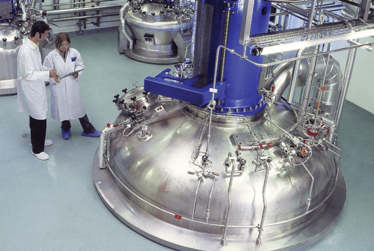America’s Most Wanted: Biosimilars
It’s been a long road, but the FDA has finally given the nod to the first official biosimilar in the US
On 6 March 2015, the FDA approved America’s first biosimilar – Sandoz’s Zarxio (filgrastim-sndz), a biosimilar to Amgen’s Neupogen (filgrastim), originally licensed in 1991. Is this the big break biosimilars were looking for in the US market? Here, we catch up with Carol Lynch, Global Head of Biopharmaceuticals & Oncology Injectables at Sandoz, to get her reaction to the news.
How does it feel to be biosimilar forerunners?
It feels fantastic! We are delighted – and honored – to be leading the way in the US just as we did in Europe with the first ever biosimilars (Omnitrope [somatropin] in 2006 and Binocrit [epoetin alfa] in 2007). We are particularly pleased that FDA approved Zarxio for all originator indications. It further reinforces the whole scientific basis of the biosimilar development model, which is about proving similarity to the reference product, rather than ‘reinventing the wheel’ on safety and efficacy.
But this isn’t ultimately about Sandoz and science – it’s about improving outcomes for patients, who are now a big step closer to seeing genuine competition in the world’s largest biologics market. It’s been a long time coming, but there is now a real opportunity to increase overall access to high-quality biologics across the US.

Can you take us through the steps leading up to the approval?
To summarize, lots and lots of detailed hard work over many years! The US biosimilar approval pathway was first signed into law in 2010, five years after the introduction of a regulatory framework for biosimilars in the EU. Since then, there have been two parallel work streams: working with the agency and other stakeholders to support the development of a scientific framework for biosimilar approval under the umbrella of the Biologics Price Competition and Innovation Act, and working directly with the FDA to actually navigate the pathway for the first time with our Zarxio dossier.
It’s always difficult to jump in first…
Yes – the chances of failure are greater. With hindsight, the big advantage of going first on this occasion was that we had the opportunity to engage in a meaningful and sustainable dialogue with the agency about the scientific principles of a successful regulatory process, including the best way to leverage the FDA’s own substantial experience of evaluating reference product changes over time.
How do you see the US biosimilars market developing?
We believe that customers, physicians and patients in the US will gradually adopt biosimilars. As seen in Europe and in other countries where they are marketed, high-quality biosimilars have increased patient access to important and often life-saving treatments, and have helped generate savings for payers and healthcare systems. Having said that, we do not expect this will be all smooth sailing – after all, this is a new market. Overall, it will be essential to drive public acceptance as this is still a new field in the US.
One of the most immediate issues is the question of non-proprietary names (INNs) for US biosimilars. We still hope that the FDA will follow the tried-and-proven EU approach and assign biosimilars the same INN as their reference products. This approach would ensure scientific consistency, optimize safety and traceability by following the accepted practice of using brand names to identify products, and avoid unnecessary confusion about the nature of biosimilars.

As an Editor at Texere, I’m working closely with our audience to create vibrant, engaging content that reflects the hard work and passion that goes into bringing new medicines to market. I got my start in biomedical publishing as a commissioning editor for healthcare journals and have spent my career covering everything from early-stage research to clinical medicine, so I know my way around. And I can’t think of a more interesting, challenging or important area to be working in.



















